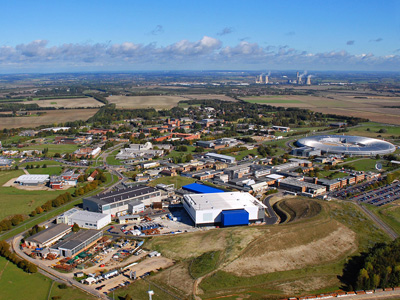Evaluating the software behind some of the world's large experimental facilities
Evaluating the software behind some of the world's large experimental facilities
Posted on 17 February 2012
Evaluating the software behind some of the world's large experimental facilities
 The Software Sustainability Institute has made an assessment of an international Google Code project led by the Rutherford Appleton Laboratory in Oxfordshire. A report based on the findings of the assessment is now being discussed with the project’s senior collaborators in the US and France.
The Software Sustainability Institute has made an assessment of an international Google Code project led by the Rutherford Appleton Laboratory in Oxfordshire. A report based on the findings of the assessment is now being discussed with the project’s senior collaborators in the US and France.
Ten years ago, the Scientific Technology Facilities Council (STFC) started work on a catalogue for data collected from experiments at its laboratories at Harwell and Daresbury. The software, known as I-Cat (Information Catalogue), is now used by the Diamond Light Source, the Central Laser Facility, and the ISIS Neutron and Muon Source (which is related to the MAUS project).
Every day I-Cat is used to catalogue millions of files. Other large experimental facilities have adopted the software, such as ILL in Grenoble, France, SNS in Tennessee, USA, and Elettra in Trieste, Italy. Facilities in Australia, Spain, Switzerland and Germany are considering I-Cat for use with their work.
"It is good to know that what we have been doing has some merit; we know that we must focus on doing the right things, and this report will really help us", says Alistair Mills, the ICAT Project Manager. "I am very pleased with the evaluation. Now of course, we have to act on the findings of the assessment. We have a lot of work to do in 2012 to ensure that we meet the needs of the users of the software."
The full version of the report will be available soon on the Institute’s website. The following is a summary:
Both the ICAT collaboration and the ICAT software are at a critical point in the ICAT life cycle. To date, the mechanisms in place for the management of ICAT have met the needs of the partners in the collaboration. However, ICAT is facing the problems associated with the successful and increasing uptake of the software. There is general agreement, and specific requests from stakeholders, that the mechanisms expand to support a larger community of users.The driving force for change comes from two European projects which are evaluating ICAT as a metadata cataloguing solution for widespread use.
The principal source of data for this assessment was a set of fifteen interviews. These interviews led to the identification of a set of observations, leading to a set of recommendations for action.
The key factor for the future success of ICAT is that the collaboration provides assurance to the stakeholders that ICAT will continue to meet their needs.
The assessment provides a set of recommendations of which the following are the most important: define the governance of the collaboration; create a well-defined induction process for new collaborators; improve and streamline the requirements ingest process; expand, improve and promote the road-mapping activity; develop policies for deprecation, code contribution and software release; allocate effort to assurance and promotion; create a group of external product testers; engage actively in facility roll-out plans; create a capability to provide mentors for new collaborators.

